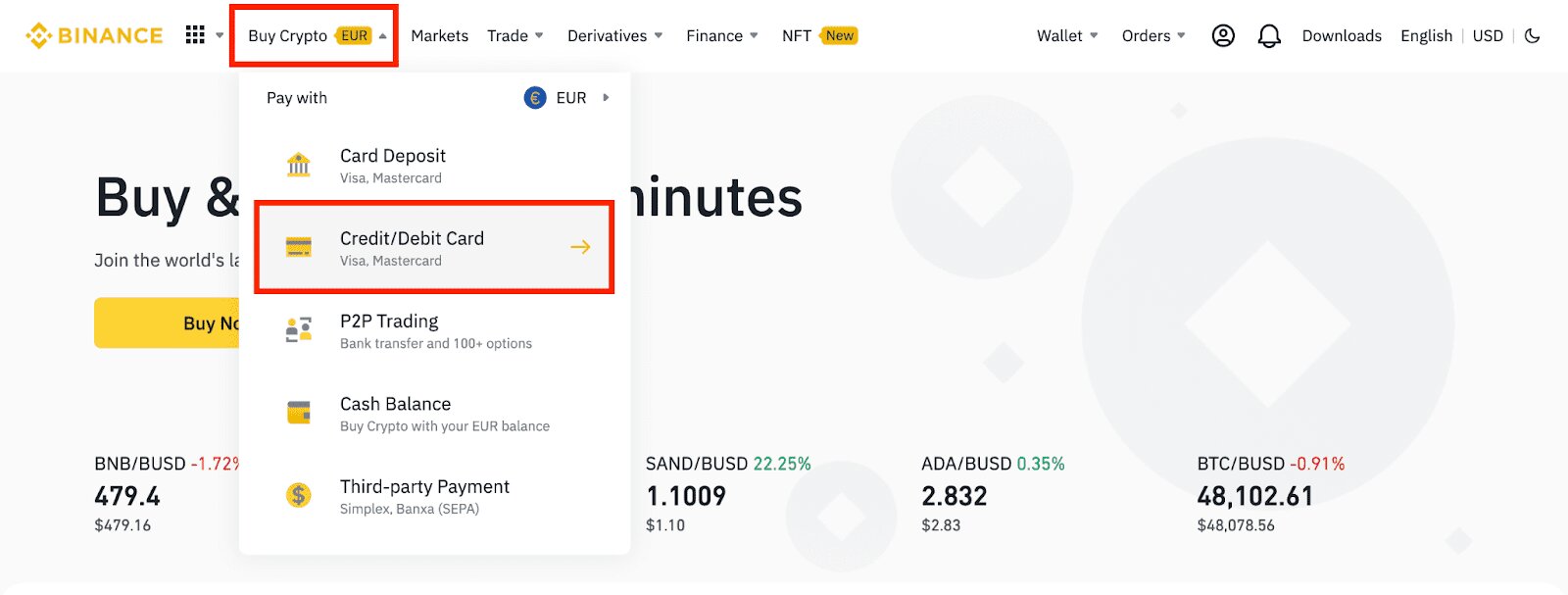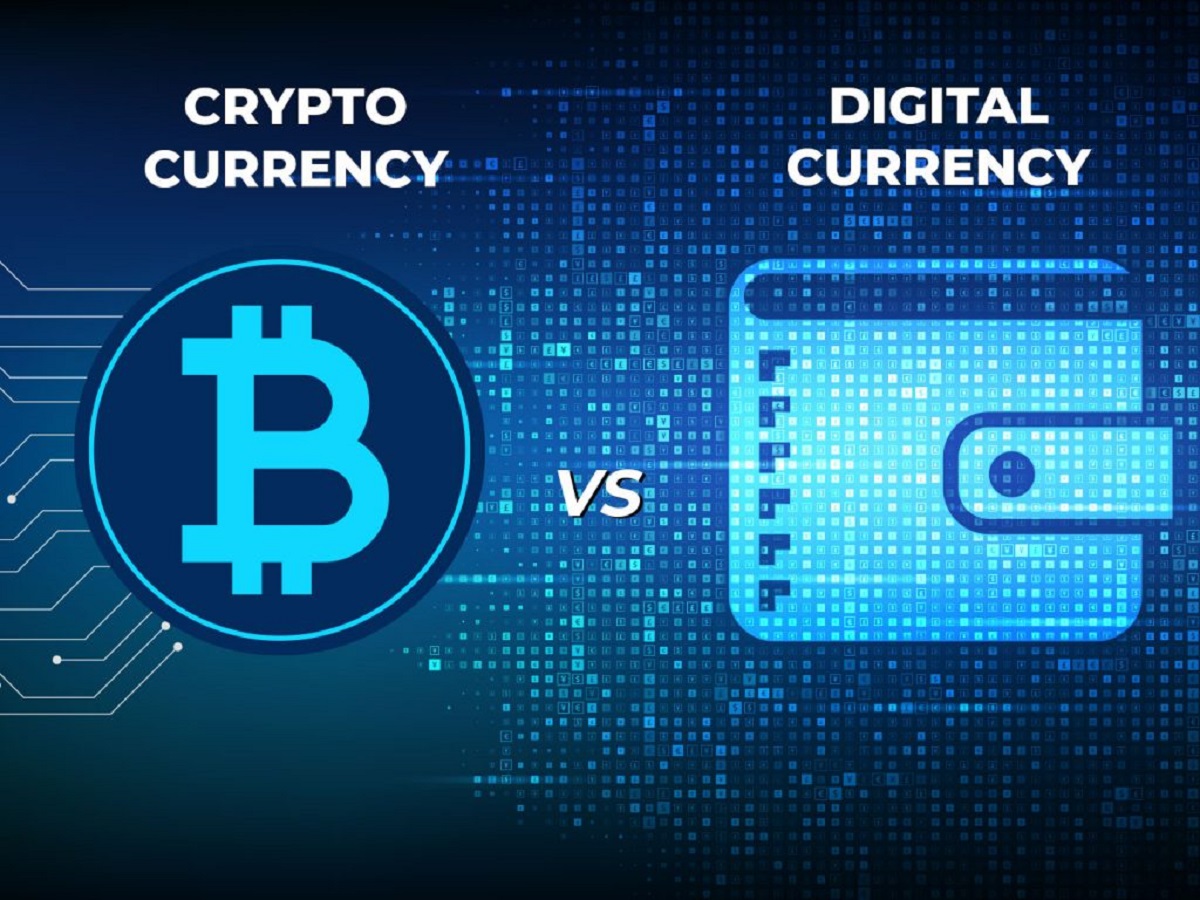Introduction
Welcome to the exciting world of currency, where financial transactions take place and economic systems thrive. However, in recent years, a new form of currency has emerged, challenging the traditional notion of money. This new player in the financial landscape is none other than cryptocurrency. With its rise in popularity, many people are curious about how it differs from government-issued currency.
Cryptocurrency, such as Bitcoin and Ethereum, is a digital or virtual form of currency that uses cryptography for secure transactions and control of new unit creation. It operates independently of a central bank or government authority and is based on decentralized technology called blockchain. On the other hand, government-issued currency, also known as fiat currency, is the legal tender recognized and regulated by a central authority, typically a government.
In this article, we will explore the key differences between cryptocurrency and government-issued currency, shedding light on their distinct characteristics, control mechanisms, transaction verification methods, privacy and anonymity features, regulatory frameworks, store of value, volatility levels, and accessibility.
By understanding these differences, individuals and businesses can make informed decisions about how they choose to engage with these different forms of currency, while also appreciating the various implications and potential benefits they offer in the modern digital era. So let’s dive in and explore the fascinating world of cryptocurrency and government-issued currency!
Definition and Characteristics of Cryptocurrency
Cryptocurrency is a digital or virtual form of currency that utilizes cryptography for secure transactions and control of new unit creation. Unlike government-issued currency, cryptocurrencies operate independently of a central bank or government authority, relying instead on decentralized technology known as blockchain.
One of the key characteristics of cryptocurrency is its decentralized nature. Transactions are verified and recorded by a distributed network of computers, known as nodes, rather than a central authority. This decentralized approach enhances security and makes it difficult for any single entity to manipulate or control the currency.
Another defining characteristic of cryptocurrency is its limited supply. Many cryptocurrencies, such as Bitcoin, have a maximum supply cap, ensuring scarcity and potentially increasing their value over time. This feature is in stark contrast to government-issued currency, which can be printed or minted as needed by the central bank.
Cryptocurrencies also prioritize privacy and anonymity. While transactions are visible on the blockchain, users are typically identified by pseudonyms rather than their real names, providing a level of confidentiality. However, it is worth noting that some cryptocurrencies offer varying degrees of privacy, with some designed to enhance anonymity more than others.
Furthermore, cryptocurrencies are often borderless, enabling frictionless and near-instantaneous transactions across countries and continents. This global accessibility and ease-of-use have opened up new opportunities for financial inclusivity, particularly in regions with limited access to traditional banking services.
Additionally, cryptocurrencies are often associated with technological innovation, fueling the growth of blockchain technology. The underlying blockchain technology enables secure and transparent record-keeping, reducing the risk of fraud and eliminating the need for intermediaries in certain transactions.
Overall, cryptocurrencies offer a unique set of characteristics that differentiate them from government-issued currency. Their decentralized nature, limited supply, privacy features, borderless capabilities, and association with technological innovation make cryptocurrencies a compelling alternative for those seeking financial sovereignty and exploring the possibilities of the digital economy.
Definition and Characteristics of Government-Issued Currency
Government-issued currency, also known as fiat currency, refers to the legal tender recognized and regulated by a central authority, typically a government. It is the primary form of currency used in most economies around the world. Unlike cryptocurrencies, government-issued currency is not decentralized and operates under a centralized system.
One of the key characteristics of government-issued currency is its status as a legal medium of exchange. It is backed by the full faith and credit of the government, giving it wide acceptance within the country’s borders. This acceptance is crucial for facilitating transactions and maintaining economic stability within the society.
Government-issued currency is also typically controlled by a central bank, which has the authority to regulate its supply. This control allows central banks to manage monetary policy and influence economic factors such as inflation and interest rates. By adjusting the supply of money, central banks aim to maintain price stability and promote economic growth.
Unlike cryptocurrencies, government-issued currency does not have a limited supply. The central bank can increase or decrease the money supply by printing or minting additional currency. This flexibility allows for the accommodation of economic changes and the stabilization of financial systems during times of crisis.
Government-issued currency is typically regulated by various laws and regulations that ensure its legitimacy and stability. Governments enforce measures to prevent counterfeiting, money laundering, and other illicit activities involving currency. These regulations aim to maintain trust in the currency and protect the integrity of the financial system.
Furthermore, government-issued currency provides a certain level of legal recourse and consumer protection. When using fiat currency, individuals have legal rights associated with their transactions and can seek remedies in the event of disputes or fraudulent activities. This aspect provides a level of trust and certainty in financial transactions.
Overall, government-issued currency is a centralized and widely accepted form of payment within a specific jurisdiction. Its stability, legal status, and regulatory framework contribute to its widespread use in day-to-day transactions. While it may lack some of the innovative features of cryptocurrencies, government-issued currency plays a critical role in maintaining economic stability and facilitating commerce within a country’s economy.
Differences in Centralization and Control
One of the significant differences between cryptocurrency and government-issued currency lies in their degree of centralization and control. Cryptocurrencies, such as Bitcoin and Ethereum, operate on a decentralized network, where transactions are verified and recorded by a distributed network of computers, known as nodes. There is no central authority governing or controlling the currency.
On the other hand, government-issued currency is highly centralized and regulated by a central bank or monetary authority. The central bank has the power to control the money supply, set interest rates, and implement monetary policies to manage economic factors such as inflation and economic growth.
This distinction in centralization and control has several important implications. In the case of cryptocurrencies, the absence of a central authority means that transactions are not subject to third-party control or censorship. The decentralized nature of cryptocurrencies ensures that no single entity has control over the currency, making it resistant to manipulation or political interference.
Furthermore, the decentralized structure of cryptocurrencies allows for peer-to-peer transactions without the need for intermediaries. Users can transact directly with one another, reducing transaction fees and speeding up the overall process. This aspect enhances efficiency and eliminates the reliance on traditional financial institutions.
In contrast, the centralized control of government-issued currency affords the central bank the ability to regulate the economy. Central banks use a range of macroeconomic tools to influence interest rates, manage inflation, and stabilize the financial system. This centralized control provides a level of stability and predictability within the economy, mitigating potential risks and promoting economic growth.
However, the centralized control of government-issued currency also means that the value and stability of the currency are subject to government policies and decisions. Governments can print or mint more money, leading to inflation and depreciation of the currency. Additionally, political and economic factors can influence the value and exchange rates of government-issued currency, making it vulnerable to external pressures and market fluctuations.
Overall, the decentralized nature of cryptocurrencies gives individuals more control over their finances and removes the need for intermediaries. In contrast, government-issued currency offers a centralized system that allows for the regulation and stability of the economy. Understanding these differences in centralization and control is essential for individuals and businesses when considering the advantages and limitations of each currency type.
Differences in Transaction Verification
Transaction verification is another crucial aspect that sets cryptocurrency and government-issued currency apart. In the world of cryptocurrencies, transactions are verified through a process called mining or consensus algorithms, depending on the specific cryptocurrency. This verification process is performed by a decentralized network of computers, known as nodes, that work together to validate and record transactions on the blockchain.
The verification process in cryptocurrencies involves solving complex mathematical puzzles to validate the authenticity of transactions. Miners or validators compete to solve these puzzles, and the first to solve it successfully adds the verified transaction to the blockchain. This decentralized validation mechanism ensures the integrity and security of transactions, making it extremely difficult for malicious actors to tamper with the transaction history.
In contrast, government-issued currency transactions rely on a centralized authority, such as banks or financial institutions, to verify and complete transactions. When using fiat currency, transactions are processed through the bank or financial institution’s systems, ensuring the funds are transferred securely from one account to another.
This centralized process typically involves various levels of authentication, such as personal identification numbers (PINs), signatures, or biometric data, to ensure the authorized parties are involved in the transaction. Additionally, banks and financial institutions often employ sophisticated security measures, such as encryption and fraud detection systems, to protect against unauthorized access and fraudulent activities.
The centralized verification process of government-issued currency offers certain advantages, such as quick and efficient transactions within the traditional financial system. However, it also introduces a reliance on intermediaries, increasing the potential for delays, fees, and the risk of human error or system failures.
Moreover, the decentralized verification process of cryptocurrencies offers benefits like transparency, immutability, and resistance to hacking or fraudulent activities. Each transaction is recorded on the blockchain, creating a permanent and transparent transaction history that can be audited and verified by anyone. This aspect enhances trust and reduces the need for intermediaries, streamlining transaction processes.
However, the decentralized verification process of cryptocurrencies is not without its challenges. The mining or consensus algorithms used for transaction validation can be energy-intensive, leading to environmental concerns. Additionally, transaction confirmation times can vary depending on the specific cryptocurrency and network congestion, leading to potential delays.
Overall, the verification processes used in cryptocurrencies and government-issued currency differ significantly. Cryptocurrencies rely on decentralized networks and consensus algorithms, ensuring the transparency and integrity of transactions. In contrast, government-issued currency transactions rely on centralized authorities and established banking systems for verification, offering convenience and familiarity to users in traditional financial transactions.
Differences in Privacy and Anonymity
Privacy and anonymity are critical considerations when comparing cryptocurrency and government-issued currency. Cryptocurrencies offer varying degrees of privacy and anonymity, depending on the specific cryptocurrency and user practices. Transactions conducted with cryptocurrencies are pseudonymous, meaning users are identified by unique addresses rather than their real identities.
While transactions are recorded on the blockchain and visible to the public, the true identity behind each address remains anonymous unless voluntarily disclosed. This level of privacy provides users with a degree of confidentiality in their financial transactions. However, it is important to note that the level of privacy can vary between different cryptocurrencies, with some offering improved privacy features like stealth addresses or ring signatures.
In contrast, government-issued currency transactions typically involve a higher level of transparency and less anonymity. When conducting transactions using fiat currency, financial institutions and banks retain records of the transactions, which can be accessed by authorized entities like law enforcement or government agencies if required.
Furthermore, governments often have mechanisms in place, such as Know Your Customer (KYC) and Anti-Money Laundering (AML) regulations, which require individuals to provide personal identification information when opening bank accounts or conducting significant financial transactions. These measures aim to prevent illicit activities such as money laundering, terrorist financing, and tax evasion, but they also decrease the level of transactional anonymity.
It is worth noting that while cryptocurrency transactions offer a certain level of pseudonymity, the underlying blockchain technology allows for traceability. Advanced blockchain analysis techniques can potentially link transactions and addresses, unveiling patterns and possible associations. Additionally, if a user exchanges cryptocurrencies for government-issued currency on a regulated exchange, their identity may be connected to those transactions.
The level of privacy and anonymity offered by cryptocurrencies has both advantages and disadvantages. On one hand, it can provide individuals with increased financial privacy, protecting them from unwarranted surveillance or unauthorized access to their personal information. This aspect is particularly valuable in regions with political instability or where individuals may face persecution for their financial activities.
On the other hand, the pseudonymous nature of cryptocurrency transactions also presents challenges and potential risks. The lack of complete transparency may attract illicit activities, such as money laundering or financing illegal activities. To mitigate these risks, some jurisdictions have implemented regulations that seek to enhance transparency and accountability when dealing with cryptocurrencies.
In summary, cryptocurrencies generally provide a higher degree of privacy and anonymity compared to government-issued currency transactions. While cryptocurrencies offer pseudonymity, government-issued currency transactions are more transparent, with the potential for authorized entities to access transaction records. It is crucial for individuals to understand the level of privacy offered by different cryptocurrencies and the legal obligations and regulations associated with their use.
Differences in Regulation and Legal Status
Regulation and legal status are significant factors that differentiate cryptocurrency and government-issued currency. Government-issued currency operates under a well-established legal framework, with central banks and financial authorities overseeing its circulation and use. The legal status of government-issued currency is widely recognized, and it is the official means of payment in a particular country.
On the other hand, the regulation and legal status of cryptocurrencies are still evolving. Due to their decentralized and borderless nature, cryptocurrencies operate in a complex regulatory landscape that varies from country to country. Some jurisdictions have embraced cryptocurrencies and enacted supportive regulations, while others have taken a cautious or restrictive approach.
Regulators are increasingly recognizing the importance of regulating cryptocurrencies to protect investors, prevent illicit activities, and maintain financial stability. Regulatory measures can include licensing requirements for cryptocurrency exchanges and service providers, anti-money laundering (AML) and know your customer (KYC) regulations, and tax obligations for cryptocurrency holders and businesses.
The legal status of cryptocurrencies can also differ between jurisdictions. In some countries, cryptocurrencies are recognized as legal forms of payment, while in others, their legal status is still uncertain or subject to ongoing debates. Governments may categorize cryptocurrencies differently, such as commodities, securities, or virtual assets, which affects the applicable regulations and taxation rules.
Moreover, the legal status of cryptocurrencies can impact their acceptance and use in various sectors. Some businesses and merchants might be hesitant to accept cryptocurrencies due to uncertain legal frameworks, potential regulatory risks, or concerns about volatility.
Government-issued currency, however, benefits from clear legal status and widespread acceptance. It is the backbone of financial systems, backed by the government’s authority and the trust placed in the central bank. Businesses, individuals, and financial institutions readily accept government-issued currency for daily transactions, financial contracts, and legal obligations.
While the regulation and legal status of cryptocurrencies can bring clarity and protect users, it also presents challenges. Stringent regulations can impose compliance burdens on cryptocurrency businesses and limit innovation. Lack of uniformity in regulations globally can create regulatory arbitrage opportunities and hinder cross-border transactions or cooperation.
Overall, the regulatory landscape and legal status of cryptocurrencies differ significantly from that of government-issued currency. Government-issued currency operates under well-established legal frameworks, while cryptocurrencies operate in a rapidly evolving regulatory environment. Understanding the regulatory requirements and legal status is essential for individuals and businesses engaging with cryptocurrencies to ensure compliance and mitigate risks.
Differences in Store of Value and Volatility
The store of value and volatility of cryptocurrency and government-issued currency are essential factors that distinguish the two forms of currency. Government-issued currency, backed by the central bank and the government’s authority, is widely regarded as a stable store of value. It is accepted as a medium of exchange and a reliable means for storing wealth over time.
Government-issued currency typically experiences lower levels of volatility compared to cryptocurrencies. Central banks use monetary policies to manage inflation and stabilize the value of the currency. Through measures such as adjusting interest rates and controlling the money supply, central banks aim to maintain price stability and prevent significant fluctuations in the value of government-issued currency.
Contrarily, cryptocurrencies, such as Bitcoin and Ethereum, are known for their volatility. Cryptocurrency prices can experience substantial price swings within short periods. The volatility can be attributed to factors such as market speculation, adoption rates, regulatory developments, and macroeconomic events.
The high volatility of cryptocurrencies can make them attractive for speculative investments, but it also presents risks. Rapid price fluctuations can result in significant gains or losses for cryptocurrency holders. The volatility of cryptocurrencies can be an impediment when it comes to using them as a stable store of value or as a reliable medium of exchange in day-to-day transactions.
Additionally, the limited supply of some cryptocurrencies, such as Bitcoin, contributes to the volatility. As demand for a limited supply increases, the price tends to rise, and vice versa. This characteristic makes cryptocurrencies more susceptible to dramatic price swings compared to government-issued currency, where supply is typically controlled to stabilize value.
However, it is worth noting that the volatility of cryptocurrencies can attract investors and traders who seek opportunities for significant returns. Some individuals embrace the volatility as part of the cryptocurrency market’s inherent nature and potential for profit-making.
Nevertheless, the high volatility of cryptocurrencies can pose challenges, particularly in practical usage and adoption. Businesses and individuals may be hesitant to accept cryptocurrencies as payment when the value can change rapidly, exposing them to potential losses. Volatility also undermines the stability required for cryptocurrencies to serve as a reliable store of value over time.
In summary, government-issued currency is generally perceived as a stable store of value due to the backing of central banks. It experiences lower levels of volatility compared to cryptocurrencies. Cryptocurrencies, on the other hand, exhibit high levels of volatility, making them attractive for speculative investments but challenging for practical usage and widespread adoption. The potential for significant price swings in cryptocurrencies requires individuals and businesses to carefully consider the risks and benefits associated with their use and holding.
Differences in Accessibility and Inclusivity
Accessibility and inclusivity are important considerations when comparing cryptocurrency and government-issued currency. Cryptocurrencies have the potential to increase financial accessibility and inclusivity by offering an alternative financial system that operates outside of traditional banking channels.
One of the key advantages of cryptocurrencies is their borderless nature. Individuals with access to the internet can transact with cryptocurrencies regardless of their geographic location. This global accessibility opens doors to financial services for individuals in regions with limited or no access to traditional banking services.
Cryptocurrencies also have the potential to provide financial services to unbanked and underbanked populations. According to the World Bank, around 1.7 billion adults worldwide do not have access to formal financial services. Cryptocurrencies can offer them a means of securely storing and transferring value without the need for a traditional bank account.
Moreover, cryptocurrencies allow for near-instantaneous cross-border transactions at potentially lower fees compared to traditional banking systems. This aspect can facilitate international remittances, allowing individuals to send and receive money across borders without the need for intermediaries and at a lower cost.
Government-issued currency, on the other hand, relies on established banking systems for accessibility. While traditional banking services are widespread in many countries, there are still individuals who face barriers to accessing banking services due to factors such as geographical distance, economic constraints, or lack of necessary documentation.
Government-issued currency transactions often require individuals to have a bank account, which can be a limiting factor for those without access to banking services. Additionally, traditional banking systems typically involve transaction fees, minimum balance requirements, and other financial barriers that can exclude certain individuals from participating fully in the formal financial system.
However, the accessibility and inclusivity of cryptocurrencies are not without challenges. While access to the internet continues to expand globally, there are still areas with limited internet connectivity, preventing individuals from accessing cryptocurrencies. Additionally, technological barriers, such as the need for smartphones or computers, can hinder accessibility.
Another challenge lies in the need for education and awareness about cryptocurrencies. Many individuals may still be unfamiliar with cryptocurrencies and how to securely use and store them. Improving educational resources and promoting user-friendly interfaces can help bridge this knowledge gap and enhance accessibility.
Overall, cryptocurrencies have the potential to increase financial accessibility and inclusivity by offering an alternative financial system that transcends traditional banking barriers. While there are challenges to overcome, such as internet connectivity and education, continued advancements in technology and awareness can pave the way for broader cryptocurrency adoption and financial inclusion.
Conclusion
In conclusion, cryptocurrency and government-issued currency have notable differences that shape their characteristics, use cases, and implications. Cryptocurrencies operate on decentralized networks, offering increased privacy, transaction transparency, and borderless accessibility. They provide individuals with greater control over their finances and the potential for financial inclusion in underserved regions.
On the other hand, government-issued currency operates under centralized control and established legal frameworks. It offers stability, trust, and wide acceptance as a medium of exchange in everyday transactions. Government-issued currency has the backing of central banks and is regulated to maintain economic stability and protect consumers.
The differences between cryptocurrency and government-issued currency extend to centralization and control, transaction verification processes, privacy and anonymity features, regulation and legal status, store of value and volatility, as well as accessibility and inclusivity.
Understanding these differences allows individuals and businesses to make informed decisions about which currency best suits their needs and preferences. Both forms of currency have their advantages and limitations, and each has a unique role to play in the evolving global financial landscape.
As technology and regulations continue to evolve, it is essential to stay informed about the latest developments and advancements in both cryptocurrency and government-issued currency. This knowledge empowers individuals to navigate the complexities of the modern financial world and make informed choices regarding their financial transactions and future.
Whether you choose to embrace the innovative potential of cryptocurrencies or rely on the stability and familiarity of government-issued currency, understanding the differences and staying informed will be key to effectively navigate the diverse financial landscape that lies ahead.

























